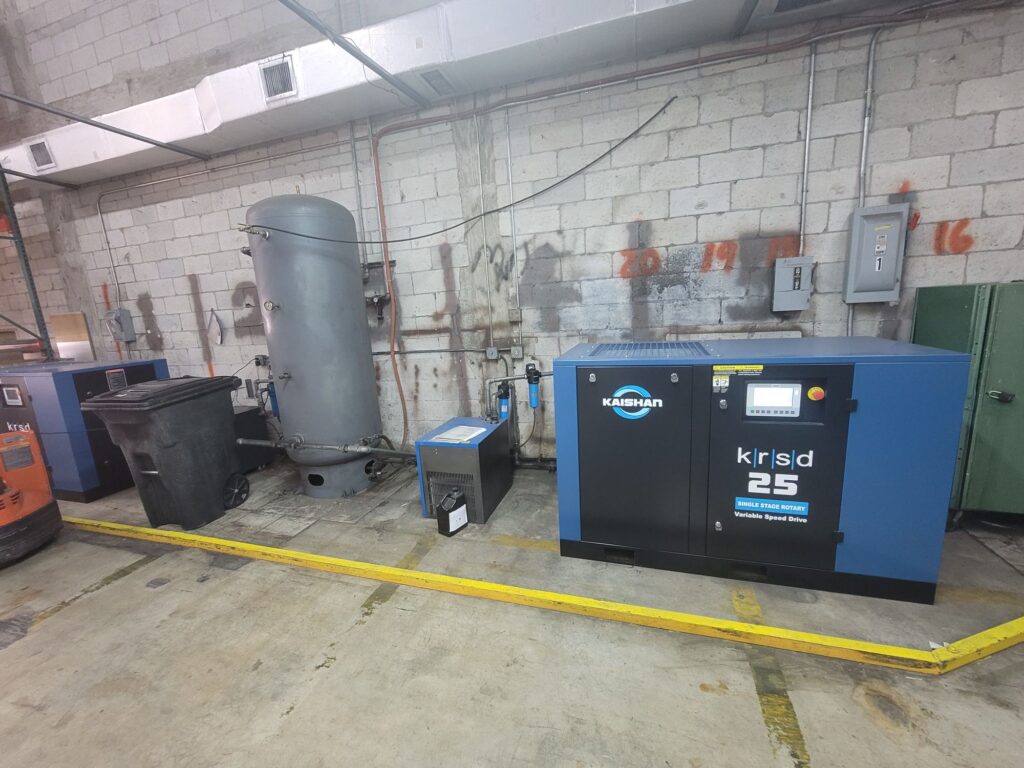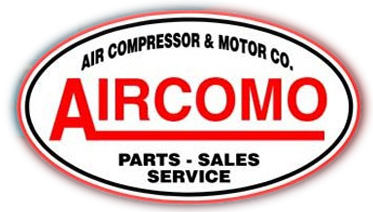When shopping for an air compressor, whether it’s a 5-horsepower air compressor motor for your workshop or a 100 hp to kW heavyweight for industrial applications, the multitude of options can be bewildering. Often, buyers are tempted to use horsepower as a deciding factor. However, as we’ve learned, this can be as misguided as choosing medicine based solely on the size of the pill without considering its purpose or potency.
The Myth of Horsepower in Air Compressors: A Deeper Look
It’s crucial to understand that the horsepower figure prominently displayed on any air compressor doesn’t always equate to better performance. It has unfortunately become more of a marketing buzzword than a reliable metric of an air compressor’s capability.
Let’s take, for example, the 5hp 60-gallon air compressor you might see at your local hardware store. It may seem like an impressive piece, but there’s an important detail to consider; the standard electrical outlet you plan to plug it into likely cannot handle the lofty horsepower figures advertised.
Misconceptions About Horsepower
The inflated horsepower values can prove misleading if not understood properly. The most common misconception is that higher horsepower equates to more power output, but this isn’t always the case.
Consider this:
The advertised horsepower often doesn’t consider the efficiency or the real power output when under load.
Understanding this is key to not being swayed by these big numbers.
Efficiency and Power Output
Efficiency plays a vital role in determining the actual power output of an air compressor. A more efficient machine will deliver more power for the same amount of input energy.
To illustrate this point, let’s consider the relationship between 100 hp to kW. Simply put, 1 horsepower is equivalent to approximately 0.746 kilowatts. Therefore, a 100 hp machine theoretically should provide around 74.6 kW of power.
However, due to factors like mechanical losses and inefficiencies, the actual power delivered might be significantly less. This highlights why it’s essential not just to look at horsepower but also to consider efficiency and other factors when evaluating air compressors.
SCFM: The Metric That Matters
When sizing an air compressor, your primary focus should be on SCFM, or Standard Cubic Feet per Minute. This is a critical term that measures the flow rate of air that your compressor can deliver. In essence, it indicates the capacity of your compressor to perform work.
Questions like “What is SCFM in an air compressor?” and “Air compressor SCFM” are becoming more frequent, suggesting that customers are gaining a greater awareness of this measurement’s significance.
Understanding SCFM
SCFM stands for Standard Cubic Feet per Minute. It is a unit used to measure the volume of air an air compressor can supply at a given pressure, typically at a standard pressure of 14.7 PSI (Pounds per Square Inch) at sea level.
Simply put, this metric tells you how much air your compressor can supply in one minute under standardized conditions.
Why SCFM Matters
Let’s dive deeper into why SCFM is so crucial:
- Tool Requirements: Different tools have different SCFM requirements to operate efficiently. For instance, a sandblaster requires a higher SCFM than a nail gun. Therefore, understanding how many cubic feet of air your tool needs every minute allows you to select a compressor that can meet these demands.
- Performance Indicator: The SCFM rating of an air compressor directly affects its performance. A higher SCFM means that the compressor can supply more air, and consequently run more tools simultaneously or power larger tools.
- Efficiency: By matching the SCFM of the compressor with your tools’ requirements, you ensure optimal efficiency. An oversized compressor wastes energy by producing more air than needed, while an undersized one overworks itself trying to meet demand—shortening its lifespan in the process.
Hence, when pondering over “what size compressor do I need?”, looking at the SCFM with your tools’ requirements is not just beneficial—it’s crucial for an appropriate match.
Sizing Air Compressors Accurately
To avoid the mistakes of oversizing or undersizing, which could either lead to unnecessary expenditure or insufficient power, air compressor sizing should be done meticulously. While air compressor what size do I need is a valid question, ‘size’ here shouldn’t be mistaken for horsepower. By understanding your tools’ SCFM requirements and adding a margin for continuous operation or future expansion, you can determine what size compressor needs much more effectively.

Real-world Efficiency: From 5 Horsepower Motor to Industrial Giants
In the world of air compressors, raw horsepower isn’t always the best measure of performance. Instead, real-world efficiency and quality often play a significant role in determining the output of your compressor. The SCFM (Standard Cubic Feet per Minute) rating aligns more closely with your actual requirements than horsepower figures ever could, providing a more accurate reflection of an air compressor’s potential.
Key Factors Influencing Efficiency
- The Pump and Motor Efficiency: The efficiency of both the pump and the motor directly influences how effectively an air compressor performs. A high-efficiency pump and motor can deliver higher performance even with lower horsepower.
- Quality of Components: The quality of an air compressor’s components cannot be underestimated. High-quality components tend to perform better and last longer, directly contributing to the overall efficiency.
- Overall System Design: The design of the air compressor system—everything from how it’s assembled to its operational processes—also plays a crucial role in its efficiency.
Comparing Air Compressors: Beyond Horsepower
Let’s take an example: comparing a 5hp 60-gallon air compressor label might show identical horsepower between models, but their performances could differ vastly. This is because horsepower is just one piece of the puzzle. Other factors, such as actual efficiency and motor quality, should also be taken into account when assessing an air compressor’s performance.
To sum up: don’t just look at horsepower figures when choosing an air compressor. Instead, consider these factors in tandem with the SCFM rating to find an air compressor that aligns perfectly with your specific requirements.
Horsepower vs. SCFM in Larger Units
When it comes to larger, industrial-sized units such as the purported “100-hp” air compressors, the discrepancy between labeling and actual performance may become glaringly obvious. The ostensibly identical horsepower ratings can be misleading due to the inconsistencies in how this measure is determined and labeled across different models.
Understanding Power Conversion
A much more accurate reflection of power and performance can be found by looking at the conversion from horsepower (hp) to kilowatts (kW). This conversion helps provide a standardized, consistent measurement of power that is less prone to marketing embellishments or discrepancies in labeling practices.
- For instance, 1 horsepower is equivalent to approximately 0.746 kW. By converting hp to kW, you’re able to compare apples to apples when assessing different air compressor models.
The Role of SCFM
However, power conversion alone does not give a comprehensive picture of an air compressor’s efficiency. This is where the Standard Cubic Feet per Minute (SCFM) comes into play. SCFM measures the flow rate of air that an air compressor can deliver at specific PSI (pounds per square inch) levels.
- To put it simply, a higher SCFM rating means that the air compressor can supply more air, making it suitable for more intensive applications.
The Importance of CAGI Data Sheets
The Compressed Air & Gas Institute (CAGI) provides data sheets for various air compressors. These sheets offer a transparent and thorough overview of what an air compressor can genuinely deliver, cutting through any marketing fluff.
- Use these data sheets as your go-to resource when comparing different models. They provide essential information such as the unit’s kW rating, SCFM at various PSI levels, and more.
In conclusion, don’t let potentially misleading horsepower labels confuse your decision-making process. Instead, leverage reliable resources like CAGI data sheets and focus on understanding conversions and the role of SCFM in evaluating air compressor performance.
Conclusion: Sizing with Precision
The Shift Away from Sizing Air Compressors by Horsepower
In the world of air compressors, sizing by horsepower is an outdated practice that informed consumers are increasingly avoiding. The assumption that ‘bigger is better’ with regard to horsepower or the physical dimensions of the unit, is a misconception. This is because…
- Horsepower Does Not Equal Performance: Just as a car’s capacity isn’t solely defined by its horsepower, an air compressor’s performance cannot be determined only by this factor. It’s crucial to look beyond this single metric when evaluating an air compressor.
- Physical Size Doesn’t Indicate Capacity: The physical size of an air compressor doesn’t necessarily indicate its capacity or efficiency. Modern technology has enabled manufacturers to build smaller, more compact units that pack just as much (if not more) power as their larger counterparts.

Key Factors for Evaluating Air Compressors
Instead, when selecting an air compressor, there are several other essential parameters to consider:
- SCFM Rating: This measures the flow rate of air that an air compressor can deliver at specific PSI (pounds per square inch) levels. A higher SCFM rating means that the air compressor can supply more air, making it suitable for more intensive applications.
- CAGI Data Sheets: Provided by The Compressed Air & Gas Institute (CAGI), these data sheets offer a transparent and thorough overview of what an air compressor can genuinely deliver. They provide essential information such as the unit’s kW rating, SCFM at various PSI levels, and more.
“Knowledge is power when it comes to selecting the right air compressor for your needs. Don’t let misleading horsepower labels confuse you; instead, focus on understanding conversions and the role of SCFM in evaluating air compressor performance.”
This shift in perspective away from horsepower and towards data-driven choices represents a broader trend in consumer purchasing habits that prioritize performance, efficiency, and value for money.
Frequently Asked Questions
Why is SCFM important?
SCFM measures the flow rate of air that an air compressor can deliver at specific PSI levels. A higher SCFM rating means that the air compressor can supply more air, making it suitable for more intensive applications.
What are CAGI data sheets?
CAGI Data Sheets are provided by The Compressed Air & Gas Institute (CAGI). They offer a transparent and thorough overview of what an air compressor can genuinely deliver, including vital information such as the unit's kW rating, SCFM at various PSI levels, and more.
How does understanding conversions help in evaluating an air compressor's performance?
Understanding conversions allows you to make data-driven choices based on performance metrics like SCFM, rather than focusing solely on horsepower labels, which can be misleading.
Why is there a shift in consumer purchasing habits towards data-driven choices in air compressors?
This shift represents a broader trend in consumer purchasing habits that prioritize performance, efficiency, and value for money instead of focusing on potentially misleading labels like horsepower.
How does focusing on SCFM lead to better value for money?
By focusing on SCFM rather than horsepower, you get a better understanding of how much actual usable air power you’re getting from your air compressors. This allows you to choose models that provide higher performance and efficiency, offering better value for money.
When should I consider a compressor's horsepower rating?
While the horsepower rating might give an initial idea of the compressor's capacity, it's more important to consider factors like SCFM and PSI levels for a more accurate understanding of the compressor's performance and efficiency.

